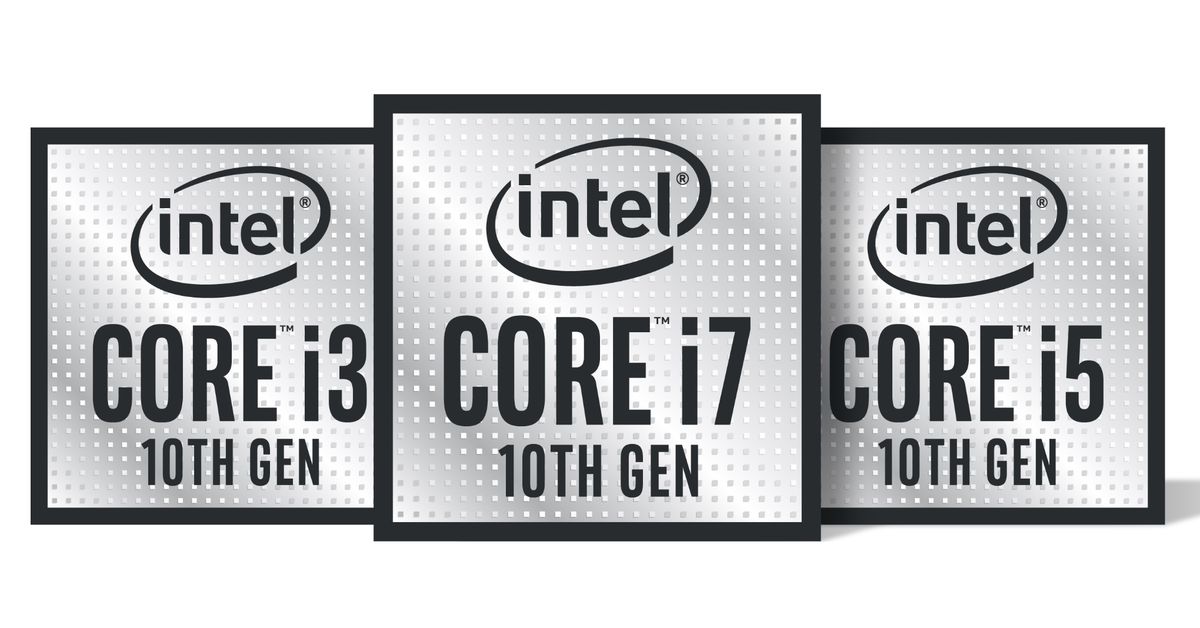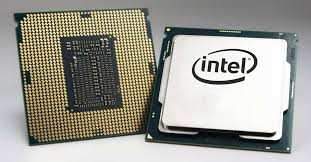
Intel has released quite a few things in the past couple of weeks. The new models from the 10th Gen Core CPU lineup come first in that context. And now, it has announced chips in the new Comet lake family. Though it is based on a different architecture, the targeted segment is the same. The previously announced chips based on Intel’s Ice lake architecture will be the first 10nm process chips to be mass-marketed from the company.
However, these newly announced Comet Lake chips will use quite antiquated 14nm process. Both the CPU’s will be sold as the 10th Gen Intel Core U-series and Y-series models. Furthermore, the chips are aimed at the thin and light notebook segment.

Both the U-series and Y- series have 4 Comet Lake models. 15W nominal TDP for the U-series and 17W nominal TDP for the Y-series is claimed by the company. However, OEMs have the option to configure them as per requirements. The U-series models can be configured up to 25 W. Whereas the models in the Y-series can be configured between 4.5W-9W considering the thermal environment.
Also Read: Vivo launches iQOO Pro: Can it usurp the existing players?
A detailed comparison between the Ice Lake and the Comet Lake processor is given below.
Intel 10th Gen Comet Lake Vs Ice Lake Processors
| Platform | Ice Lake | Comet Lake |
| Process | 10nm | 14nm |
| Brand | Intel Core i3, i5, i7 | Intel Core i3, i5, i7 |
| Thermal Design Power | 9W, 15W, 28W | 7W, 15W |
| Cores/Threads | Up to 4C/8T | Up to 6C/12T |
| LL Cache Size | Up to 8MB | Up to 12MB |
| Max Turbo Frequency | Up to 4.1GHz | Up to 4.9GHz |
| Graphics Configuration | Intel Iris Plus up to 64EU,
UHD graphics |
Intel UHD graphics |
| Graphics Frequency | Up to 1.1GHz | Up to 1.15GHz |
| Integrated Wi-Fi | Intel Wi-Fi 6 (Gig+) | Intel Wi-Fi 6 (Gig+) |
| USB Type-C | Up to 4 Thunderbolt 3 ports | Up to 4 Thunderbolt 3 ports |
| Memory | LP4/x-3733, DDR4-3200 | LP4X-2933, LPDDR3-2133, DDR4-2666 |
Laptops based on this newly announced series should arrive sometime around the late Q3 or early Q4. It is being speculated that those devices could probably launch during the IFA 2019 trade show. These models should reap the benefit of Intel’s Project Athena. This initiative promises better battery life, improved responsiveness, and connectivity. Hopefully, the devices will live up to their billing.
















![Best Ultrabooks To Buy in Nepal 2024 [Updated] Best Ultrabook Laptops in Nepal 2023 - June Update](https://cdn.gadgetbytenepal.com/wp-content/uploads/2023/04/Best-Ultrabook-Laptops-in-Nepal-2023-June-Update.jpg)
![Best Gaming Laptops in Nepal 2024 [Updated] Best Gaming Laptops in Nepal 2023 - June Update](https://cdn.gadgetbytenepal.com/wp-content/uploads/2023/04/Best-Gaming-Laptops-in-Nepal-2023-June-Update.jpg)


![Best Mobile Phones Under Rs. 15,000 in Nepal [Updated] Best Phones Under 15000 in Nepal 2024 Budget Smartphones Cheap Affordable](https://cdn.gadgetbytenepal.com/wp-content/uploads/2024/03/Best-Phones-Under-15000-in-Nepal-2024.jpg)
![Best Mobile Phones Under Rs. 20,000 in Nepal [Updated] Best Mobile Phones Under NPR 20000 in Nepal 2023 Updated Samsung Xiaomi Redmi POCO Realme Narzo Benco](https://cdn.gadgetbytenepal.com/wp-content/uploads/2024/01/Best-Phones-Under-20000-in-Nepal-2024.jpg)
![Best Mobile Phones Under Rs. 30,000 in Nepal [Updated]](https://cdn.gadgetbytenepal.com/wp-content/uploads/2023/12/Best-Phones-Under-30000-in-Nepal-2024.jpg)
![Best Mobile Phones Under Rs. 40,000 in Nepal [Updated] Best Phones Under 40000 in Nepal 2024 Smartphones Mobile Midrange](https://cdn.gadgetbytenepal.com/wp-content/uploads/2024/02/Best-Phones-Under-40000-in-Nepal-2024.jpg)
![Best Mobile Phones Under Rs. 50,000 in Nepal [Updated] Best Phones Under 50000 in Nepal 2024 Smartphones Midrange](https://cdn.gadgetbytenepal.com/wp-content/uploads/2024/02/Best-Phones-Under-50000-in-Nepal-2024.jpg)
![Best Flagship Smartphones To Buy In Nepal [Updated] Best Smartphones in Nepal 2024 Flagship Premium Samsung Apple iPhone Xiaomi OnePlus Honor](https://cdn.gadgetbytenepal.com/wp-content/uploads/2023/09/Best-Smartphones-in-Nepal-2024.jpg)